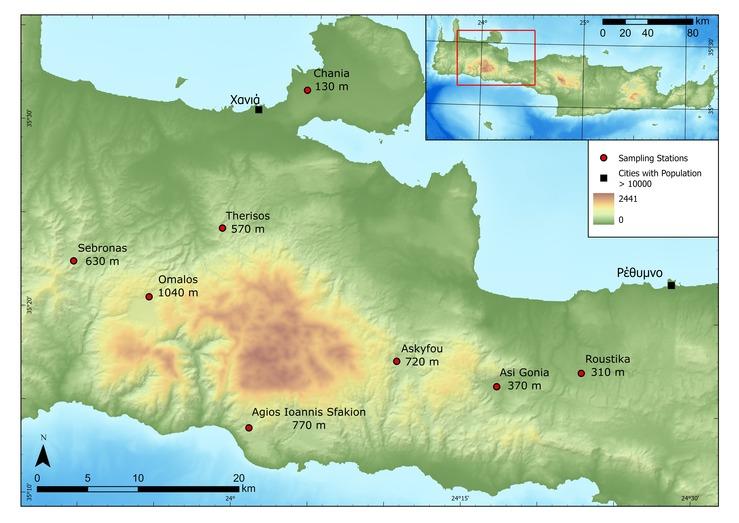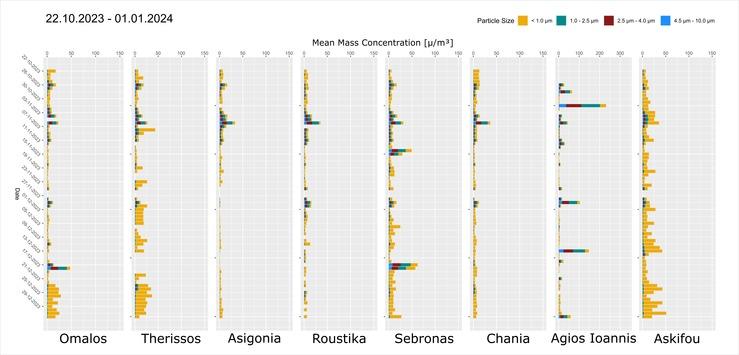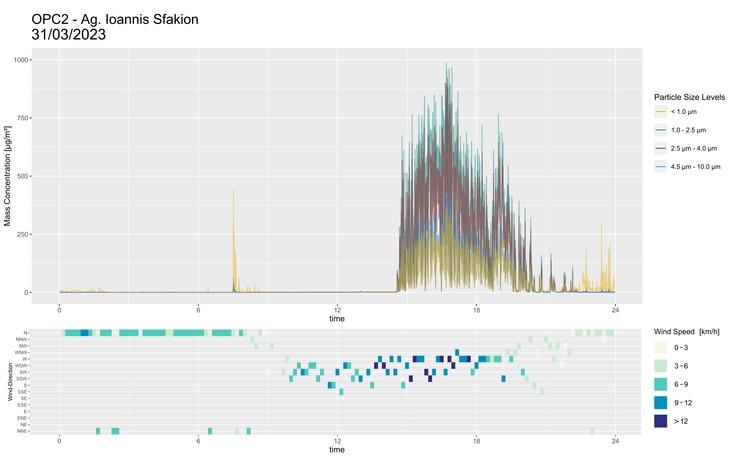Spatial and temporal patterns of dust inputs in the eastern Mediterranean region (focus: Crete) and their composition and impact on recent soil formation processes
Institute of Geographical Sciences, Physical Geography • Institute of Meteorology, Remote sensing
Research Commission FU Berlin
The Sahara is the world's largest dust source and dust distributed globally via atmospheric
circulation patterns affects many parts of the world. Due to the geographical proximity, the
Mediterranean region is an area of general interest. While the western part is already well studied in
terms of provenances, trajectories and geochemical signature of the dust, there are still significant
research gaps in the eastern Mediterranean. There, the Greek island Crete provides a favourable
natural research environment for studying the impact of Saharan dust deposition to close some of
the research gaps within the presented project.
In the framework of the project, we will combine meteorological and physical-geographical
methods in order to achieve a holistic view on these processes determining transport of Saharan
dust towards the eastern Mediterranean an eventual deposition
Using MODIS and MIDAS data, it was possible to calculate the annual variation in dust concentration over Crete. However, neither the spatial nor the temporal resolution of the satellite data is sufficient to analyze the influence of the relief.
In order to be able to determine the local influences more precisely, a total of eight measuring stations were installed in the western part of the island around the Lefka Ori mountains. All stations consist of a Deposition Sampler (Marble Sampler) and an Optical Particle Counter (OPC).

Measurement locations on Crete with their respective altitude above sea level

Measuring station consisting of a deposition sampler (top) and an optical particle counter (bottom)
The deposition sampler is emptied monthly. Although a better temporal resolution would increase the information gain, it would also reduce the sample quantity to such an extent that no further laboratory tests would be possible. The OPCs measure the dust concentration in the ranges < 1 µm, < 2.5 µm, < 4 µm and < 10 µm with a temporal resolution of 10 seconds. All measuring stations have a meteorological measuring station in the immediate vicinity.
The mineralogical composition of the deposition samples will be investigated using XRD analysis. Furthermore, the trajectories of the dust will be calculated using the Hybrid Single-Particle Lagrangian Integrated Trajectory Model (HYSPLIT). The resulting potential source areas will then be compared regarding their mineralogical fingerprint with the results of the XRD analyses on the deposition samples in order to be able to assign the source areas to specific seasons. The OPC data will be used in combination with the data from the neighboring meteorological measuring stations to analyze and interpret the influence of the relief on the dust climatology in western Crete. After the first few months of measurements, significant differences in the dust concentrations at the various locations are already visible in some cases.

Dust concentration at all measurement locations in the period 22.2023-01.01.2024. The daily mean values of the four fractions are shown.
The observation of individual dust events in combination with the wind data already makes it visually clear how closely the dust concentration is related to the wind direction and in some cases also to the wind speed. This correlation suggests a significant regional and local influence of the relief on the dust climatology of Crete, particularly in the western part of Crete, which is characterized by gorges and mountains.

Top: Dust concentration measured every 10 seconds in the four fractions in Agios Ioannis Sfakion on 31.03.2023. Bottom: Wind direction and wind speed at the measuring station over the course of the day.